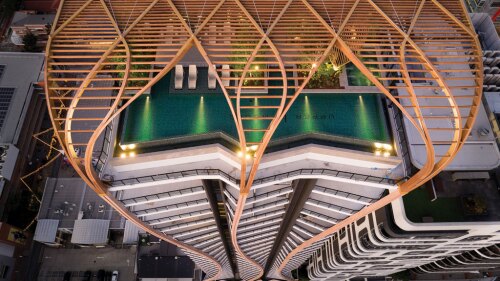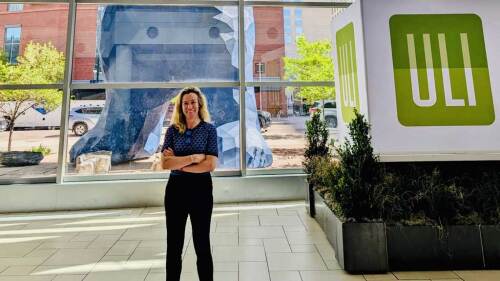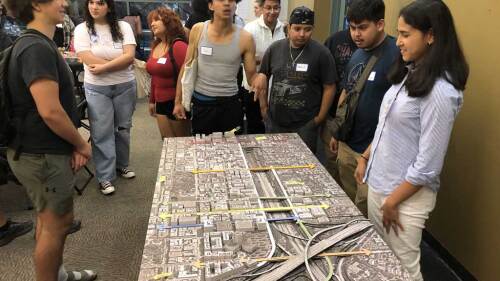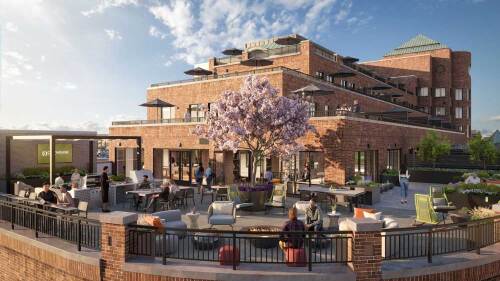Topics
Capital Markets and Finance
The Opportunity Zone program, a national model to spur private investment of housing in underserved areas, has been extended by Congress beyond 2026, marking a significant opportunity for real estate professionals. This innovative initiative not only helps rebuild communities but is a win-win for residents, property developers, and investors. The program’s success in transforming economically distressed areas has proven its value, making it crucial for industry leaders to continue supporting it.
Oracle’s stock recently surged 36 percent in a single day after the announcement of a new deal with OpenAI—a spike that generated an extra $244 billion in market cap for the company. The move fueled increased speculation about a potential AI bubble brewing. Such high-flying stock prices recall the dot-com bubble, when the NASDAQ stock index lost more than 70 percent of its value, dropping from a high of 5,048 in March 2000 to a low of 1,139 in October 2002.
Despite a still tepid transaction market, commercial and multifamily mortgage loan originations increased in the second quarter—up 66 percent compared to a year ago, and up 48 percent from the first quarter of 2025, according to the Mortgage Bankers Association. But what is the outlook for access to debt and equity capital in the second half of the year? Apart from interest rates, where are the biggest pain points in the market for commercial real estate financing?
Design & Planning
Across the Brisbane River from Brisbane, Australia’s central business district, the 33-story Upper House residential tower stands out in the city’s skyline with its “dancing balconies” and curving timber ribbons inspired by the prominent roots of Queensland’s native Moreton Bay fig tree.
In cities large and small around the world—from Columbus, Ohio, to Valencia, Spain—a major focus of modern urban revitalization has been the addition of new sports arenas, purposely built in concert with supportive, mixed-use developments that can become self-sustaining neighborhoods.
In April 2025, ULI San Francisco announced a global call to “reimagine” San Francisco’s famed Market Street, soliciting ideas grounded in ecology, economy, and equality. The goal is to turn the often drab, blighted strip into a series of vibrant, interconnected communities.
Development and Construction
A stagnant economy and uncertain market conditions leave otherwise prime developable properties without interest from buyers or investors. And owners, unwilling to sell at depressed prices, are waiting until normal market conditions return. Read what a ULI Advisory Services panel told the city of Suffolk, Virginia, to do during the interim to prepare a prime waterfront site for the tide’s return.
The San Francisco Bay Area has weathered the recessionary storm better than most regions but continues to wade through a backlog of foreclosed homes, such that virtually no for-sale housing has started construction in the past two years, said a panel recently sponsored by ULI San Francisco. But read why the panelists see a very bumpy year ahead in that market and across the country and why homebuilders should move cautiously.
Ten years ago, downtown Phoenix became a ghost town at 5 p.m.—because emphasis was placed on giant sports arenas, convention centers, hotels, and redevelopment projects with chain stores. Today, however, all is different. Read what real estate insiders say turned that downtown around and how those lessons can be applied to other cities that want to reinvigorate their central business districts.
Resilience and Sustainability
The Trump Administration is proposing further budget cuts to the National Oceanic and Atmospheric Administration (NOAA) for fiscal year 2026, which begins October 1. The agency, a branch of the U.S. Commerce Department, lost about 30 percent of its funding in 2025, and it is set to spend 14 percent less for climate research than Congress mandated. Real estate professionals often rely on NOAA data to make informed investment decisions, and the possible impact of the budget cuts could be significant for the industry.
Formerly at U.S. Department of Energy, Witteman discusses her mission to integrate sustainability and affordability in commercial real estate, revealing how ULI is leading the charge for decarbonized communities.
The opportunity to plan and design more than 50 acres of inner-city urban development in any city is significant, but in Pasadena, California, it is a possible inflection point in the city’s history, an opportunity to redress past mistakes, and to set the stage for future generations to benefit from perceptive and forward-thinking planning.
Issues and Trends
What if you were told that a brand-new, state-of-the-art building constructed today could be functionally obsolete in less than a decade? This prediction isn’t far-fetched; it’s the emerging reality in a world where technology and user expectations are evolving at a breakneck pace. And nowhere is it more apparent than in the world of parking.
Texas has experienced a prolonged economic boom, bringing with it a significant explosion in population. From 2000 to 2023, the state’s population grew by a remarkable 46.3 percent. This level of growth inevitably places pressure on cities, whether to update infrastructure, revise planning regulations, or address other critical urban challenges.
Currently, vacancy rates in the Washington, D.C. area are around 20 percent, in line with the national average. The nationwide housing shortage, meanwhile, has hit a record high of 4.7 million homes, despite a five-year uptrend in new construction. The deficit is particularly pronounced in highly desirable urban and inner-suburban locations such as Alexandria, Virginia.













